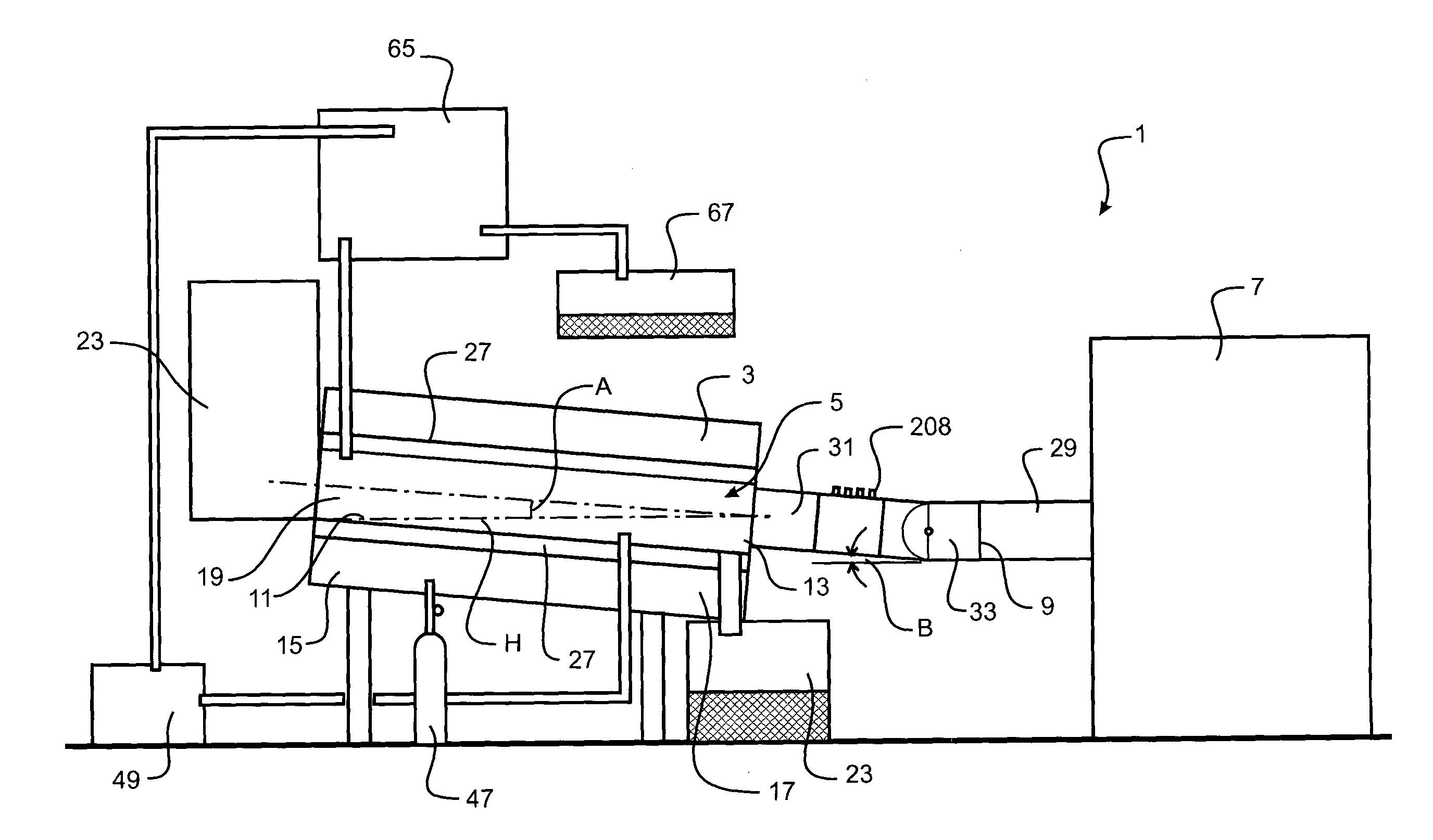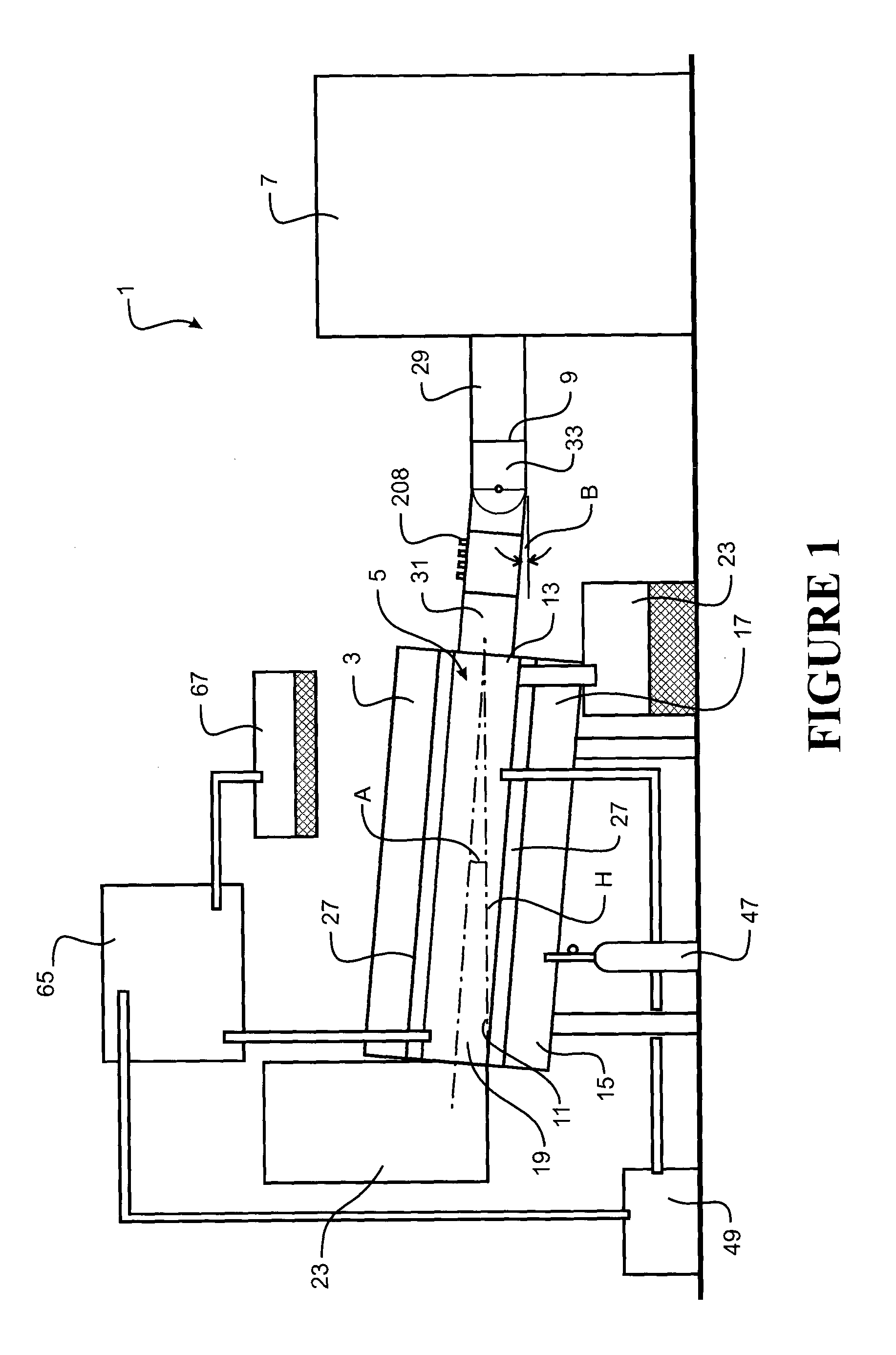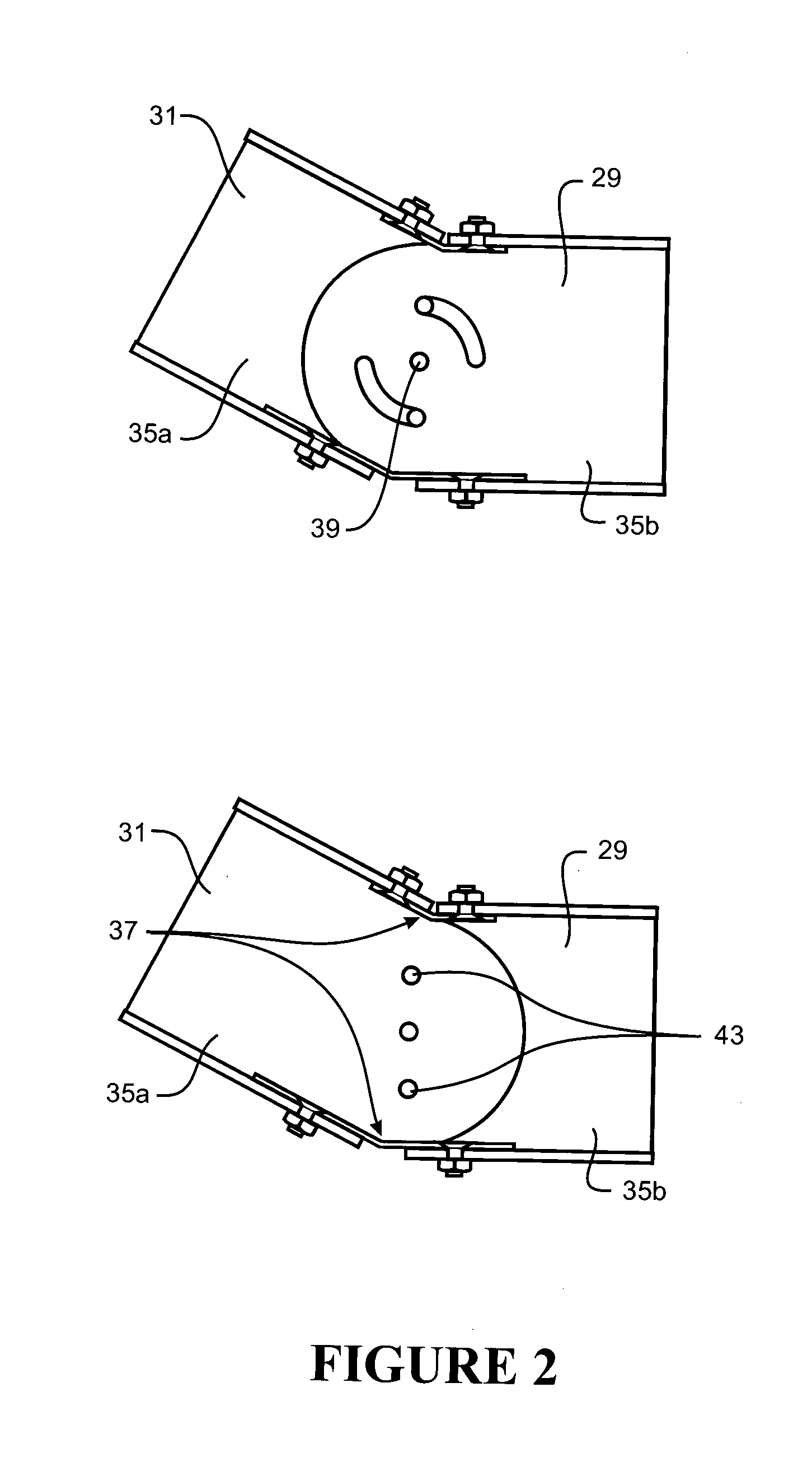Apparatus and method for processing biomass
a biomass and apparatus technology, applied in the field of apparatus and methods for processing biomass, can solve the problems of high cost, high carbon dioxide return to the atmosphere, and complex carbon dioxide storage, and achieve the effect of more plasma power
- Summary
- Abstract
- Description
- Claims
- Application Information
AI Technical Summary
Benefits of technology
Problems solved by technology
Method used
Image
Examples
example 1
[0375]Sawdust (50 g) was placed in a clean quartz reaction container, and carbon dioxide was passed over it at a rate of 40 L / min. The absorbed microwave energy was initially 3 kW.
[0376]After about 6 minutes, during which time the temperature of the sawdust was 305° C., what we believe to be a plasma formed, together with a deep orange heat glow that commenced on the inside of the quartz, which was sustained for a brief period following the power being turned off. During this period, power absorption was 7.6 kW and the temperature reached 871° C. At the end of 20 minutes, 6 g of charcoal was obtained, which had a surface area of 705 m2 / gram.
example 2
[0377]Sawdust (50 g) impregnated with 35 g of heavy pyrolysis tar was placed in a quartz reaction container, the inner surface of which was coated with carbon from previous runs, and carbon dioxide was passed over it at a rate of 40 L / min. The absorption of microwave energy was initially 5 kW, which subsequently rose to 7 kW following intermittent plasma formation and the orange surface glow. The temperature reached 756° C. At the end of 20 minutes, 12 g of charcoal was obtained, which had a surface area of 446 m2 / gram.
example 3
[0378]Sawdust (50 g) was placed in a quartz reaction container, the inner surface of which was coated with carbon from previous runs, and carbon dioxide was passed over it at a rate of 40 L / min. The orange glow appeared after about 1 minute, and microwave power was absorbed at 5 kW initially, and after 9 min, 6.5 kW. The applied power was then reduced to maintain 5 kW. At the end of 23 minutes, power ceased and 4 g of charcoal was obtained, which had a surface area of 637 m2 / gram.
PUM
| Property | Measurement | Unit |
|---|---|---|
| Temperature | aaaaa | aaaaa |
| Temperature | aaaaa | aaaaa |
| Pressure | aaaaa | aaaaa |
Abstract
Description
Claims
Application Information
 Login to View More
Login to View More - R&D
- Intellectual Property
- Life Sciences
- Materials
- Tech Scout
- Unparalleled Data Quality
- Higher Quality Content
- 60% Fewer Hallucinations
Browse by: Latest US Patents, China's latest patents, Technical Efficacy Thesaurus, Application Domain, Technology Topic, Popular Technical Reports.
© 2025 PatSnap. All rights reserved.Legal|Privacy policy|Modern Slavery Act Transparency Statement|Sitemap|About US| Contact US: help@patsnap.com



